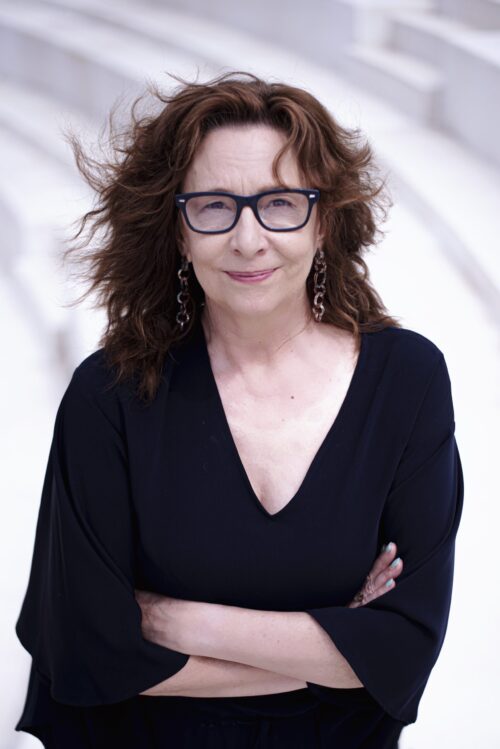
Q&A with Sara Hook, Head of the Department of Dance
The Department of Dance is implementing its redesigned curriculum this semester. As someone who played a pivotal role in the development of these changes, what do you hope to accomplish in this first year?
I am hoping there will be a lot of excitement around these changes. A top priority is cultivating more collaboration and a sense of community. We also really want our students to be fully engaged in the diversity of dance styles now being offered in intensive formats. The new curriculum provides deep immersion in rigorous experiences that challenge students physically and intellectually, while opening their eyes about the cultural, political, and economic contexts in which these dance styles emerge.
During Jan Erkert’s 16-year tenure as department head, she made significant changes to the department resulting in a substantial increase in the diversity of faculty and the student body. As the new head, how do you plan to build upon these efforts?
I believe the new curriculum is a direct outgrowth of the substantive increase in diversity of our faculty and student body. Jan was always concerned about expanding ideas about who dances, where we dance, and why we dance. Our new curriculum directly engages in these questions, and we have new faculty members that add to our diversity both in terms of race and identity and aesthetics. My goal will be to keep making recruitment of diverse faculty and students number one. We can never be complacent. And, there is no such thing as being too diverse.
What are your top priorities as head?
I see my top priorities as mentoring new faculty and making sure the new curriculum is put into place with care. I am also very much interested in expanding our non-majors program so that our reach extends out into the campus even more. We will be broadening our offerings for non-majors, and we now also have an undergraduate minor in place. We will also be expanding our online curriculum.
Having choreographed 48 pieces that have been produced in venues across the U.S., Canada, South America, and Europe, you are no stranger to success in the field of dance. What drew you to teaching?
When I was younger, I saw teaching as an outgrowth of my ambitions as a choreographer. I began teaching so that I had access to studio space! I was also anxious to teach people my ideas about the body and performance that were an outgrowth of my classical modern and somatic training and my aesthetic as a choreographer. As I taught more and more, I learned more and more. My choreography became directly connected to my pedagogy and visa versa. I also developed close relationships with students that I value greatly. Dance is a social art form, and we spend a lot of time together. We learn how to encourage and nurture each other, and that goes both ways between faculty and students. I love how my students challenge me to think in new ways and to dream beyond my own experience.
You have collaborated on numerous works, both in your academic and professional career. How do you choose which projects to take on? Which one are you most proud of?
Collaboration is certainly in my DNA. I often choose projects and people to collaborate with based on friendship and mutual respect. I am very attracted to working with people who I know will challenge me. Collaboration is an education. When you take a deep dive with someone in a creative way, you have the opportunity to learn from their vantage point and to engage in their training and professional histories in an intimate way. It is my favorite way of learning.
As the dance industry continues to break with conventional norms and push the boundaries of what dance can be, how do you think dance education can best keep up as we look to better prepare our graduates?
I do not think of dance in the academic setting as having to “keep up” with the profession. We ARE the profession. All of our faculty are active professionals presenting work all over the world. And our students often engage in that creative research with us and get opportunities to be a part of professional projects. Dance at Illinois has always been a very progressive department and that will continue. So, maybe a better question would be, how is the profession planning on keeping up with Dance at Illinois?
